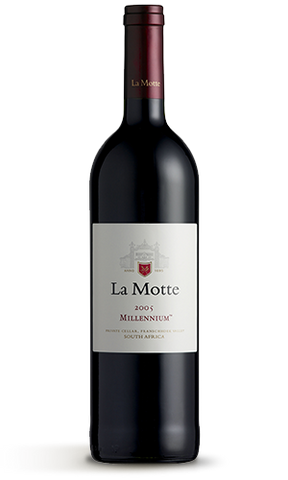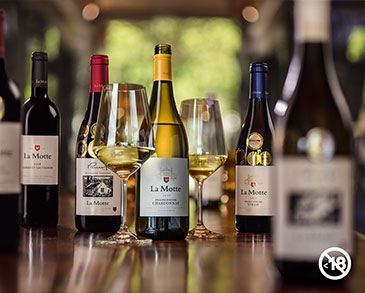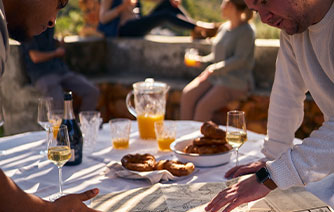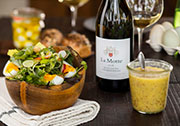
This wine originates from vineyards in the Walker Bay, Swartland, Stellenbosch and Franschhoek regions. Grapes from each of these regions make a unique contribution to the flavour components.
For the second consecutive year, the regions from which La Motte’s Millennium components originate have experienced warmer and drier conditions than those over the long term. Ample cold weather was experienced towards the end of winter, followed by a hot spring. This caused the vineyards to bud faster and evenly. Vineyard growth was lush, probably caused by nitrogen deposits during thunder conditions, so regular canopy management was required. Harvesting was two weeks earlier than usual and the first grapes (Malbec) were received from Wellington on 9 February. Grapes were very healthy and in a good condition and the harvest was characterised by good colour and concentration. The last grapes (Cabernet Sauvignon) were harvested in the Stellenbosch region on 17 March.
Vineyards grow in their own unique macro climates and in a wide variety of soil types. Different clones are represented. All the vineyards are trellised in accordance with the Perold system and are managed to maintain a perfect balance between leaf coverage and yield. Thanks to the different terroirs, each region produces its own distinctive grapes, so the grapes from each area make a unique contribution to the flavour and structure of this wine.
Grapes for the wine consist of 56% Cabernet Sauvignon, 22% Merlot, 12% Malbec, 5% Cabernet Franc and 5% Petit Verdot. The de-stalked grapes were cold-soaked for two to three days, followed by inoculation with selected yeasts. Fermentation was at between 25 to 30 degrees Celsius. After fermentation, the wine was left on the skins for a further 20 days for extra extraction and roundness. Malolactic fermentation occurred partly in the barrels.
On the nose there are pleasant cherry, roasted nut and dark chocolate flavours. There is also a presence of cooked beetroot with clove and cinnamon spices in the background. dominance is distinctive in firm tannins on the palate, mixed with pomegranate flavours. The tannins have the promise of good maturation and will soften with time.
Alcohol 13,85% vol
Residual sugar 3,2 g/l
Total acid 5,8 g/l
pH 3,66











